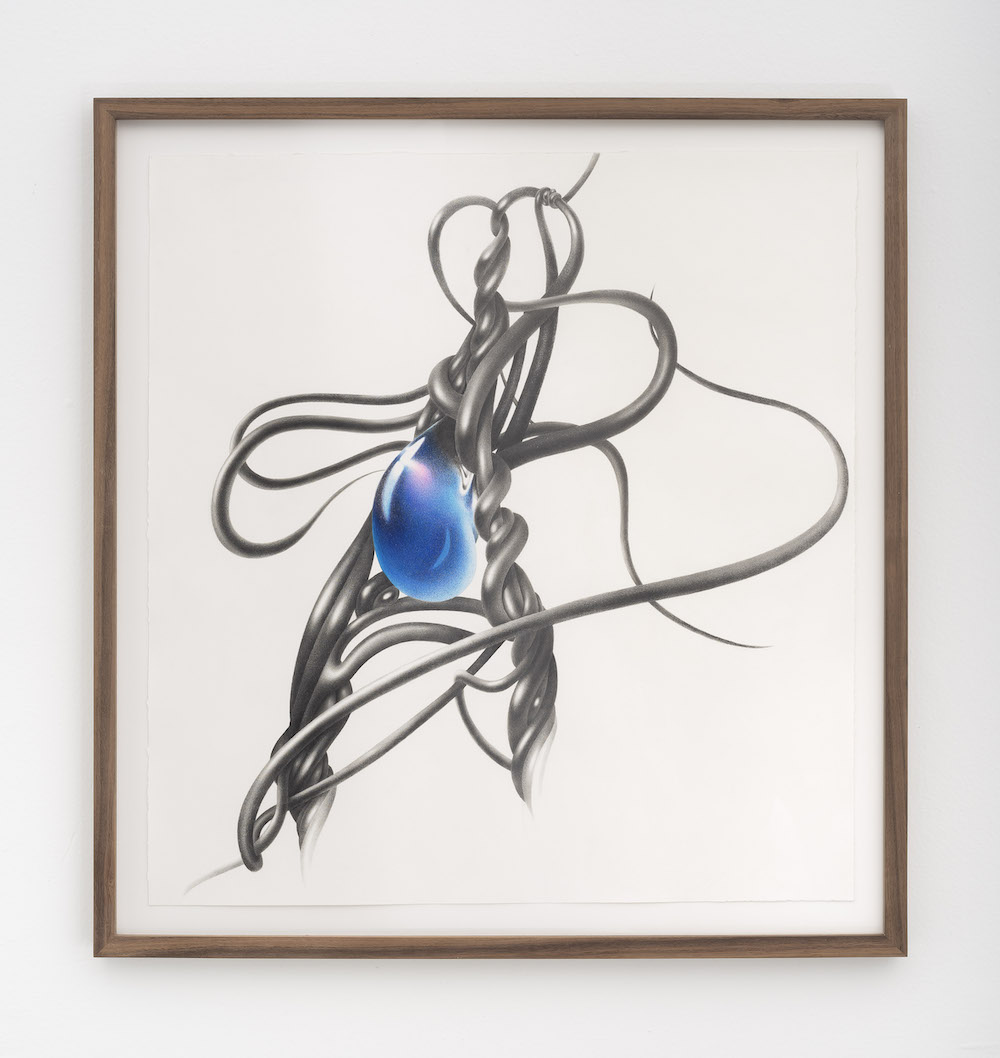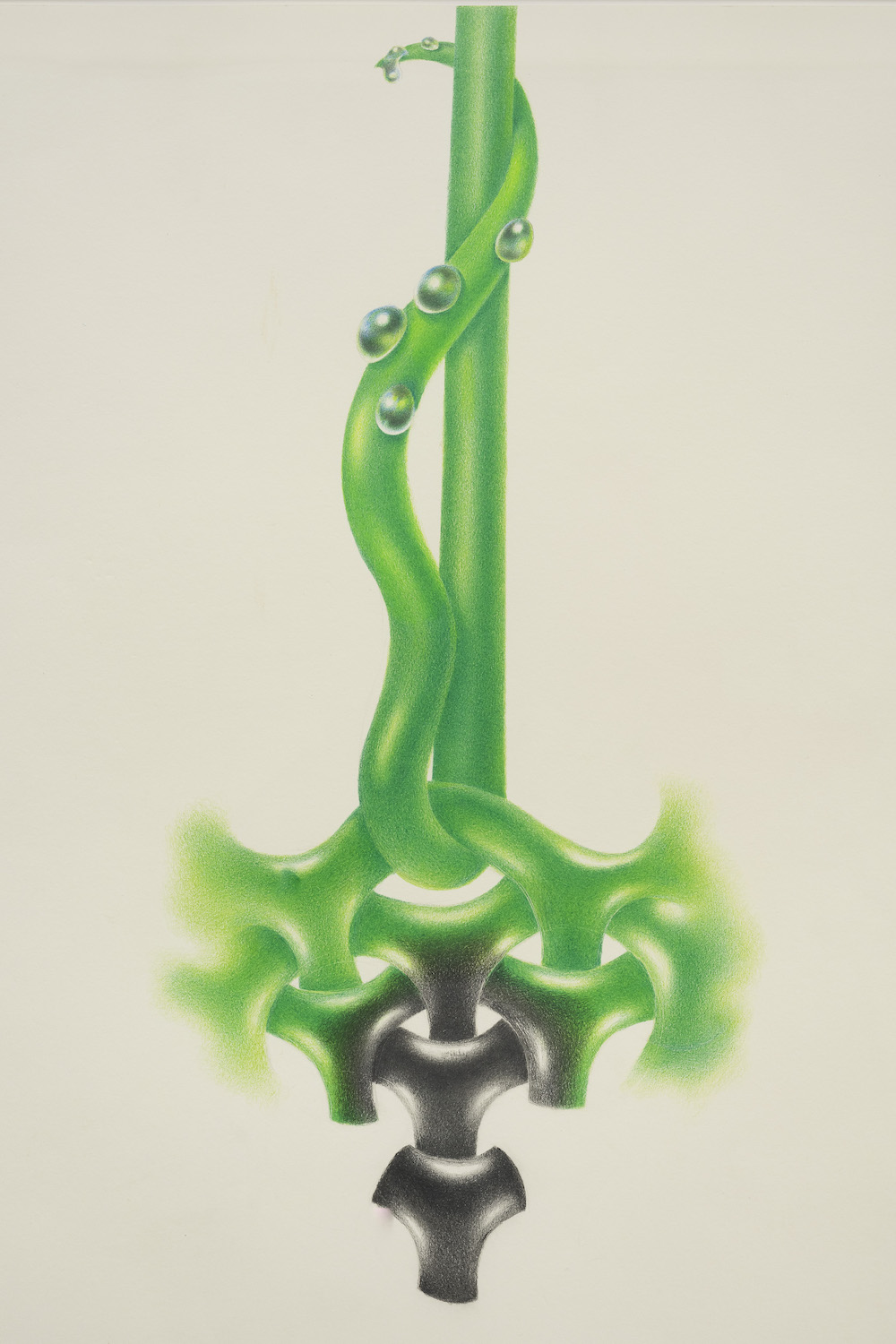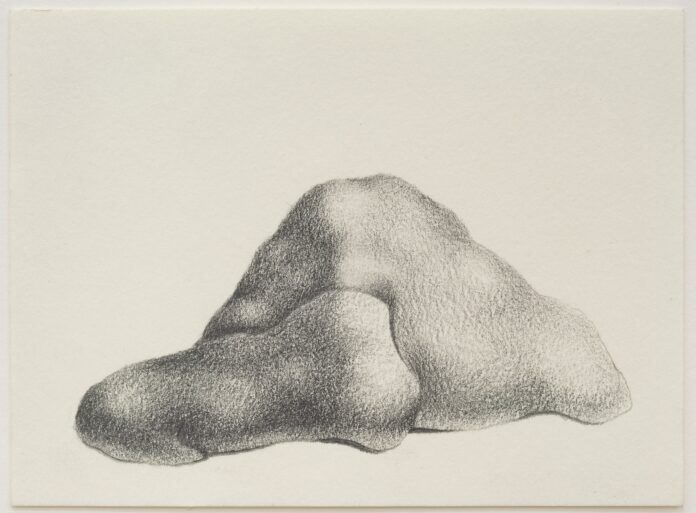In San Francisco artist Kennedy Morgan’s drawings, rich graphite forms emerge in stark contrast from the bright white of the page. Morgan creates surreal and minimal works where the inanimate becomes animate, and natural vegetation merges with flesh, arrested in a moments of transformation.
Morgan’s solo show, Tied (through March 26), presents a series of works on paper that accentuates the tension between fear and desire, transformation, and interconnectivity. The exhibition bridges two integral galleries in the Mission, Cushion Works and Delaplane, aptly expanding the interlocking motifs in the drawings to the communities that frequent these spaces.
Morgan builds richly textured bodies and knots from graphite and colored pencil. In some of the drawings, the edges of the forms fade into the white of the paper, revealing the legacy of Morgan’s marks. Layer upon layer of delicate winding strokes lie on top of one another, creating rich textures and depth. Through these meditative drawings, Morgan paradoxically signals themes of loss and growth. This generative entropy is echoed through the series of animate drawings that depict moments of transformation.

During the show’s twin openings, gallery-goers spilled onto 18th Street outside Cushion Works, forming tendrils of vibrant conversations that wound down the sidewalk northeast towards Delaplane. The group expanded and contracted around pedestrians, crosswalk signals, and parklets. It broke and reformed with the gait of each member, their obligations, and plans. Some wandered off and disappeared into the evening while others carried onward to the next venue. The walk between shows was a brief nexus of community momentarily embedded into the fabric of the city.
Across both Cushion Works and Delaplane, there are a series of small greyscale graphite works: Hug, Company, and Weight. Haunting and vulnerable, they resemble intimate moments shared between companions. These endearing fleshy forms float on the backdrop of the flat white paper. In the absence of context surrounding these shapes, the viewer focuses on the tactile engagement between them—a heavy embrace. The haptic quality of these drawings, coupled with the trace of Morgan’s hand, suggests that these drawings depict the gravity of intimacy–a feeling that is not bound in recognizable form.

In Wait for the Grass to Dry, on view at Cushion Works, a green cord pulls up against tightly knitted stitches and playfully encircles another taut green cord as if it is untying itself. Beads of liquid rise up on this strand in the act of surface tension. This is the moment when the molecules in the liquid are most attracted to one another; as they dry they separate, disseminating into the atmosphere. This drawing portrays a moment of transformation frozen in time, inciting the viewer to reflect on the changes to come and the inevitable loss that follows.
Morgan’s unctuous drawings are both fierce and deeply vulnerable. This body of work is a testament to the beauty of graphite and bittersweet reality of time passing, decay, and growth. A look into the sheen of Morgan’s graphite drawings provides a space for self-reflection and serves as a reminder to cherish the present as it passes by.
“Kennedy Morgan: Tied” runs through March 26 at Delaplane and Cushion Works galleries. More info here.





